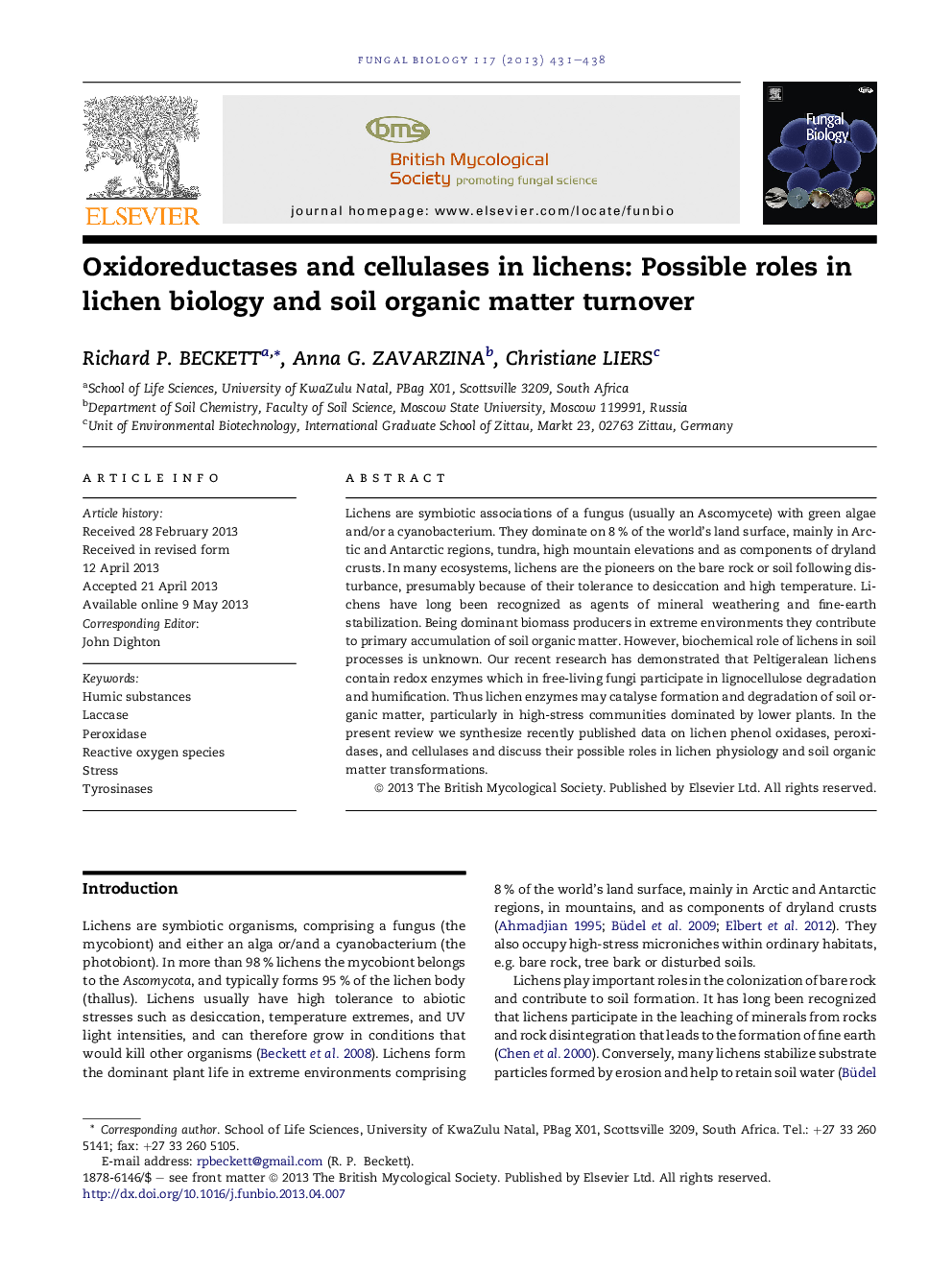| کد مقاله | کد نشریه | سال انتشار | مقاله انگلیسی | نسخه تمام متن |
|---|---|---|---|---|
| 4357060 | 1300027 | 2013 | 8 صفحه PDF | دانلود رایگان |

• We review the occurrence of extracellular redox and cellulase enzymes in lichens.
• Lichen redox enzymes are now known to include laccases, tyrosinases, and peroxidases.
• These enzymes play key roles in lichen biology, including stress defence.
• Leached enzymes are probably important in soil carbon turnover in lichen-rich areas.
• These enzymes probably function by generating extracellular reactive oxygen species.
Lichens are symbiotic associations of a fungus (usually an Ascomycete) with green algae and/or a cyanobacterium. They dominate on 8 % of the world's land surface, mainly in Arctic and Antarctic regions, tundra, high mountain elevations and as components of dryland crusts. In many ecosystems, lichens are the pioneers on the bare rock or soil following disturbance, presumably because of their tolerance to desiccation and high temperature. Lichens have long been recognized as agents of mineral weathering and fine-earth stabilization. Being dominant biomass producers in extreme environments they contribute to primary accumulation of soil organic matter. However, biochemical role of lichens in soil processes is unknown. Our recent research has demonstrated that Peltigeralean lichens contain redox enzymes which in free-living fungi participate in lignocellulose degradation and humification. Thus lichen enzymes may catalyse formation and degradation of soil organic matter, particularly in high-stress communities dominated by lower plants. In the present review we synthesize recently published data on lichen phenol oxidases, peroxidases, and cellulases and discuss their possible roles in lichen physiology and soil organic matter transformations.
Journal: Fungal Biology - Volume 117, Issue 6, June 2013, Pages 431–438